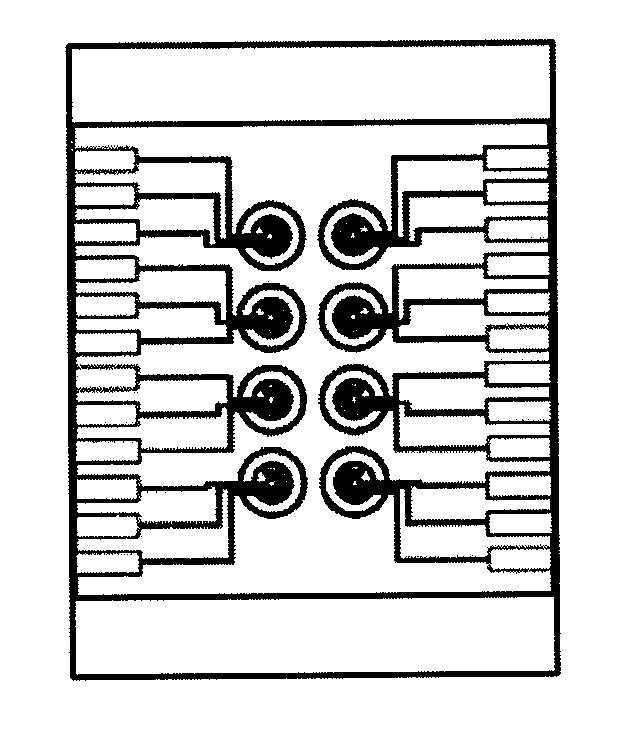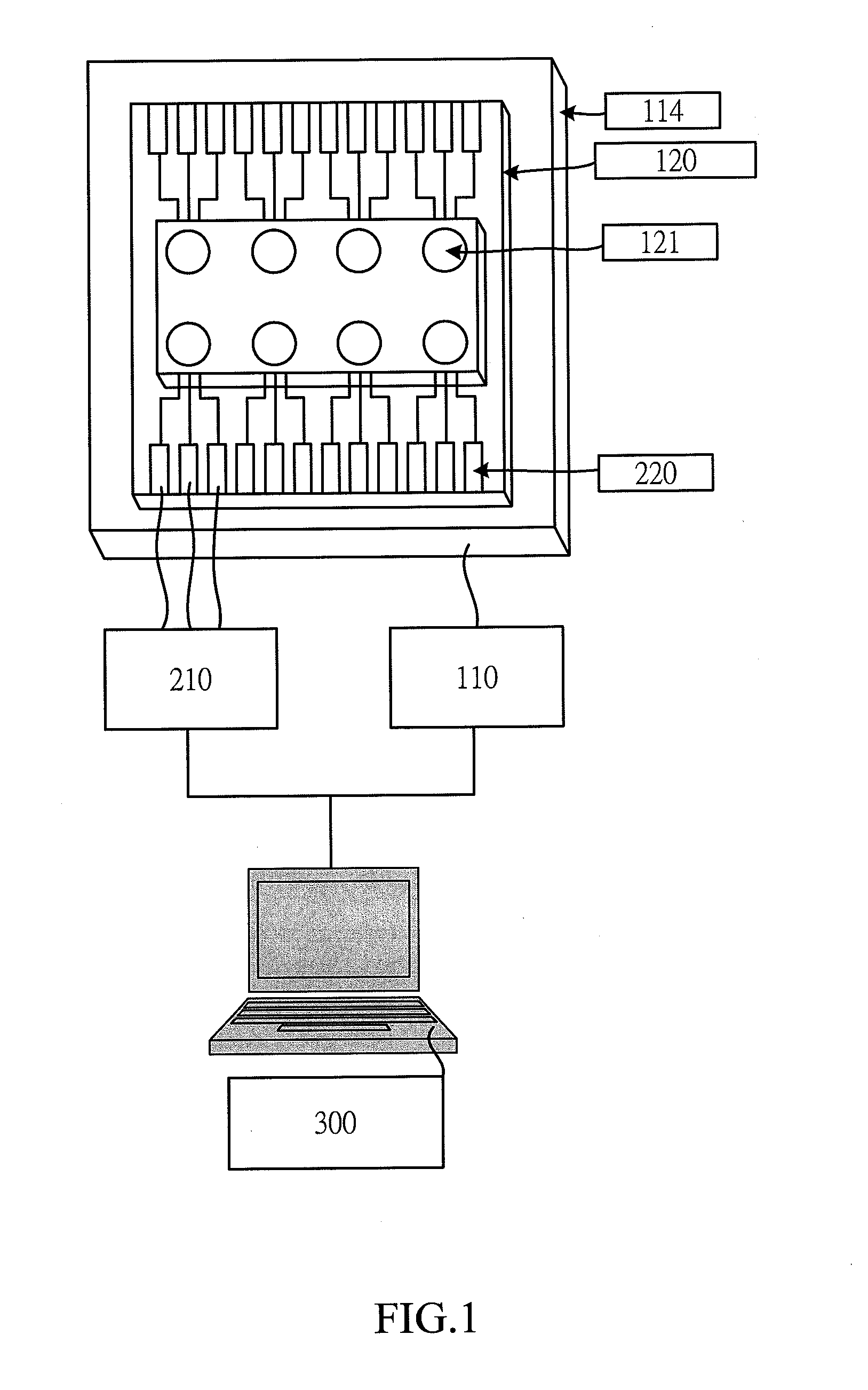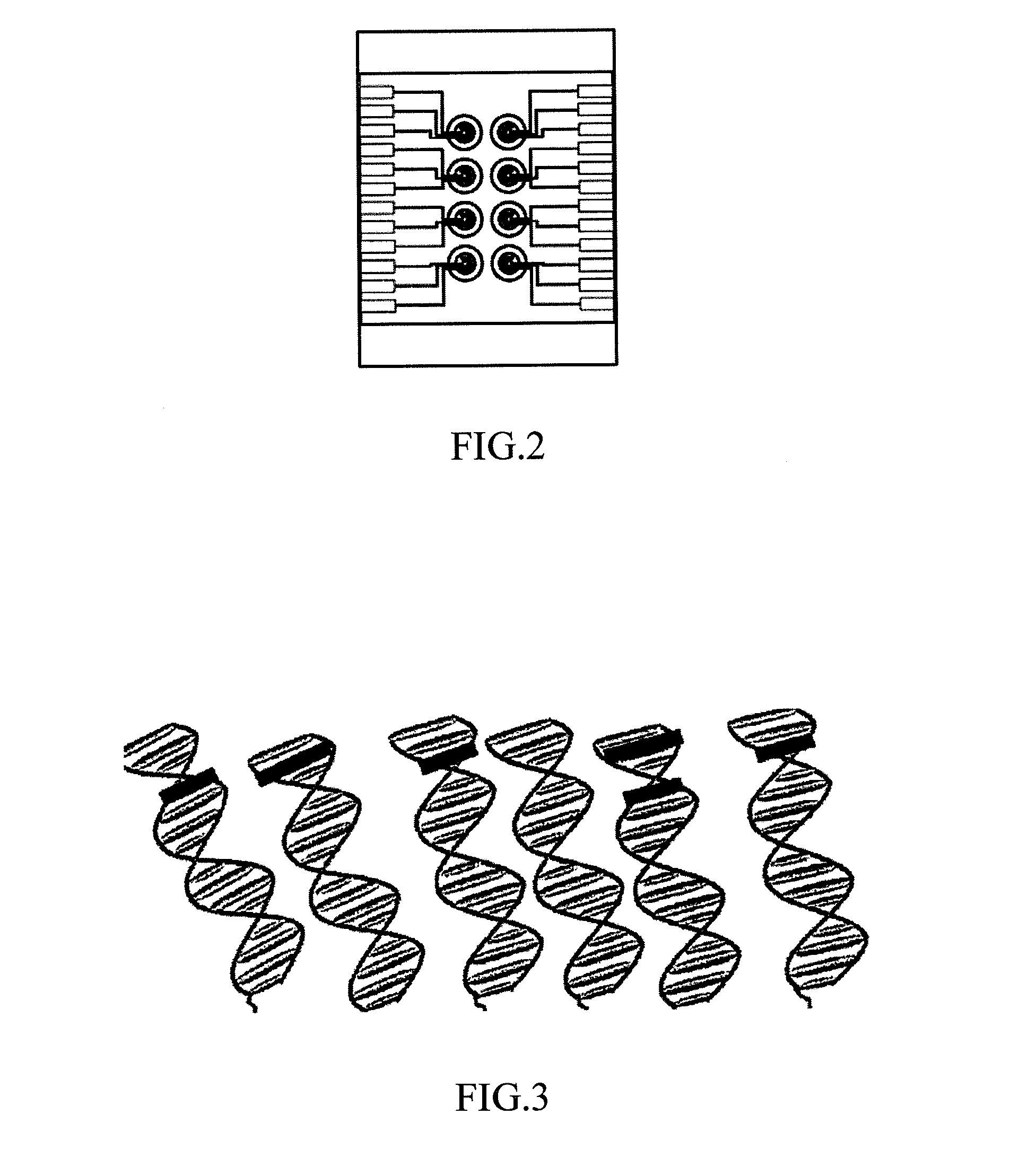Micro electrochemical multiplex real-time PCR platform
a micro electrochemical and multiplex technology, applied in the field of micro electrochemical multiplex real-time pcr platform, can solve the problems of insufficient accuracy, high cost, and high cost, and achieve the effect of rapid amplifying and quantifying a target dna
- Summary
- Abstract
- Description
- Claims
- Application Information
AI Technical Summary
Benefits of technology
Problems solved by technology
Method used
Image
Examples
example 1
[0027]According to the present invention, the novel micro electrochemical multiplex Real-Time PCR platform consists of following three parts. First, an electrochemical real-time PCR reaction system is provided which includes a PCR temperature control module (110) that the system uses to adjust the temperature of the reaction chip (120). The sample is mixed with one type of the DNA binding dyes and placed on the reaction chamber in PCR reaction chip (120) for PCR reaction, and said PCR reaction chamber (121) can be a circular structure, an enclosed structure, a liquid bead or a liquid bead coated with oil film, etc. Second, an electrochemical detection system which includes an electrochemical detection module (210) and electrodes (220) detects the electrochemical changes in the reaction solution with electrodes (220). Finally, the user interface system (300) is integrated and the DNA concentration of the test sample is quantified by specific software installed in the system.
[0028]Rea...
example 2
[0036]The present invention uses the rapid Real-time PCR test for sepsis as an example and demonstrates the application process of the novel micro electrochemical multiplex Real-Time PCR platform in clinical diagnosis. As shown in FIG. 5, 1 mL of a patient's blood sample is collected and then purified with a specific automatic magnetic nucleic acid purification system. After purification, the genomic nucleic acids are further purified with a high-speed DNA purification kit and the resulting nucleic acids are used as the templates for a PCR reaction followed by designing new and highly specific primers based on the DNA fingerprints (e.g. Gram-negative, Gram-positive, and fungus) of the bacteria that causes sepsis for a micro electrochemical multiplex Real-Time PCR platform analysis. Real-time PCR reaction mixture is prepared in a test tube by adding forward and reverse primers, 10×PCR buffer, dNTPs, ddH2O, Taq DNA polymerase, electro-active material, and finally, the purified nucleic...
PUM
| Property | Measurement | Unit |
|---|---|---|
| volume | aaaaa | aaaaa |
| micro electrochemical multiplex Real- | aaaaa | aaaaa |
| temperature | aaaaa | aaaaa |
Abstract
Description
Claims
Application Information
 Login to View More
Login to View More - R&D
- Intellectual Property
- Life Sciences
- Materials
- Tech Scout
- Unparalleled Data Quality
- Higher Quality Content
- 60% Fewer Hallucinations
Browse by: Latest US Patents, China's latest patents, Technical Efficacy Thesaurus, Application Domain, Technology Topic, Popular Technical Reports.
© 2025 PatSnap. All rights reserved.Legal|Privacy policy|Modern Slavery Act Transparency Statement|Sitemap|About US| Contact US: help@patsnap.com



